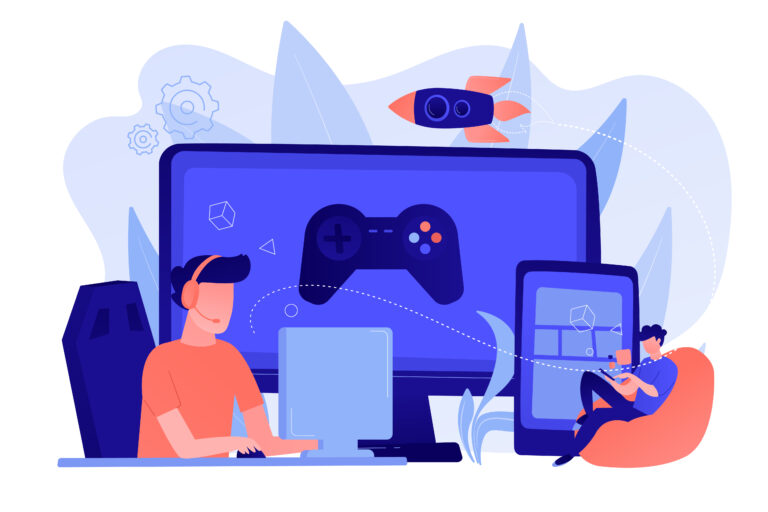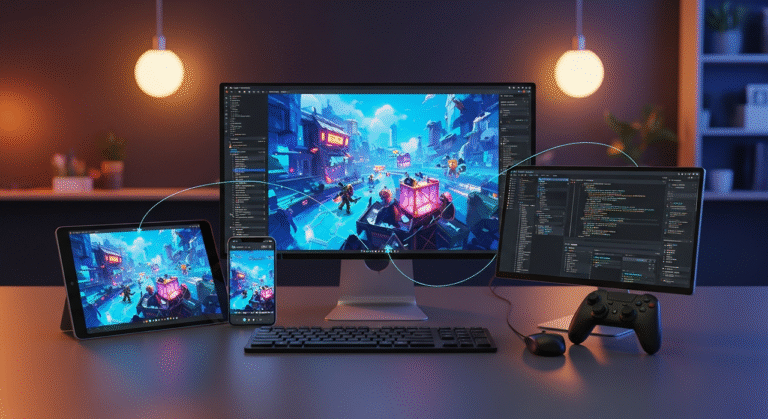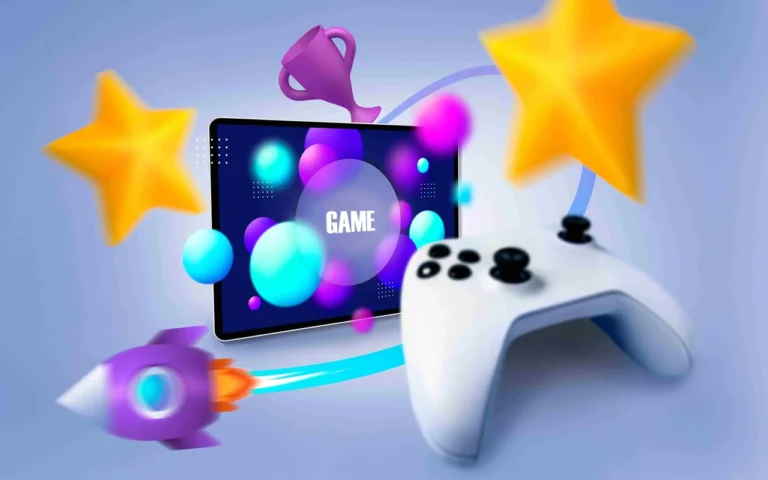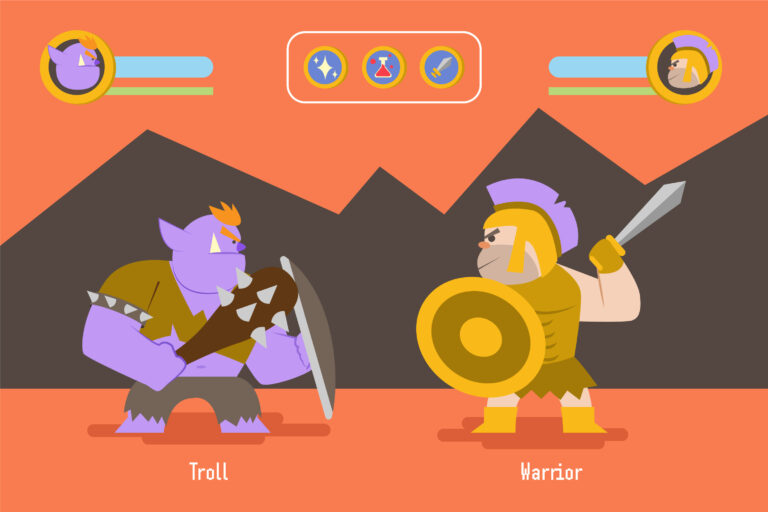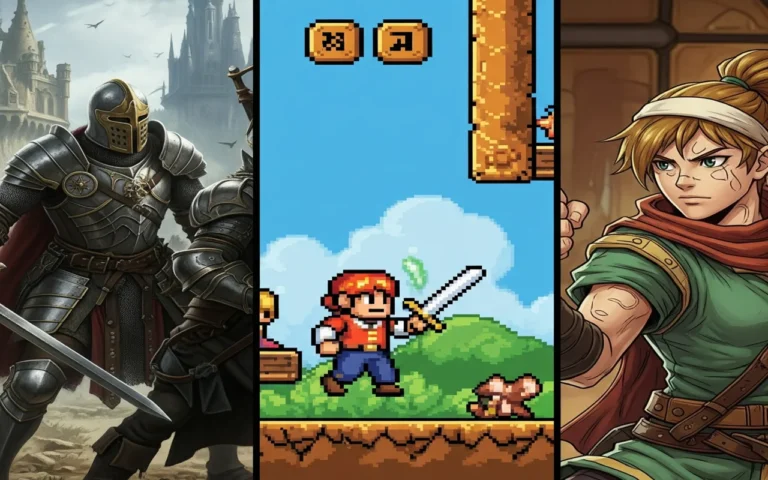Outsourcing video game art is now fundamental to modern game development. It enables every disciplined game art studio to scale production efficiently, access diverse global talent, and maintain high visual quality while strictly managing expenses.
Whether you’re producing a mobile title or an ambitious AAA game project, grasping the financial realities of 2D and 3D art outsourcing is crucial for accurate budget planning and avoiding costly missteps.
In this guide, we will break down typical pricing, the factors that drive costs, regional price variations, and practical strategies to maximize the value of your outsourcing partner relationship.


Need Game Art Services?
Visit our Game Art Service page to see how we can help bring your ideas to life!
How Much Does 2D and 3D Game Art Outsourcing Cost?
The expense of game art studio outsourcing fluctuates significantly based on the type of art, its complexity, and the required production pipeline standards.
- 2D Game Art Outsourcing: 2D art tasks, such as concept art, icons, or UI assets, on average, can range from $25 to $80 per hour.
- 3D Game Art Outsourcing: 3D art tasks like modeling, texturing, or animation typically cost between $40 and $150 per hour.
Keep in mind that while hourly rates provide a baseline, most vendors quote prices on a project-based or per-asset structure.
Costs are heavily influenced by the level of detail, the target platform (whether it’s for PC, console, or mobile), and the reputation of the outsourcing partner. Understanding these ranges early on helps to align financial expectations with production goals.
What Are the Typical Price Ranges for Each Art Type?
Now let’s examine each art type’s specific tasks and price range in detail:
2D Game Art Outsourcing Prices
2D art deliverables encompass everything from initial concept sketches to final in-game elements like character design portraits, UI/UX screens, and marketing illustrations.
- Low to Mid-Tier: Freelancers or small studios, often located in regions like Eastern Europe or Southeast Asia, may charge $50 to $300 per asset.
- High-End/Top-Tier: Premier Western studios can command $500 to $2,000 for highly complex or detailed pieces.
Maintaining a clear art style and providing comprehensive style guides at the start dramatically reduces the need for expensive revision cycles, leading to savings as the project scales.
2D Art Service | Price List (USD) | Price List (EUR) |
|---|---|---|
2D Character (Including sketch and paint) | $250 – $1000 | €240 – €950 |
2D Environment (Including sketch and paint) | $500 – $2000 | €480 – €1,900 |
2D Prop (Including sketch and paint) | $200 – $800 | €190 – €760 |
UI Design (Per Page) | $100 – $400 | €95 – €380 |
2D Character/Prop Rig | $200 – $800 | €190 – €760 |
2D Character/Prop Animation (Per Cycle) | $100 – $300 | €95 – €285 |
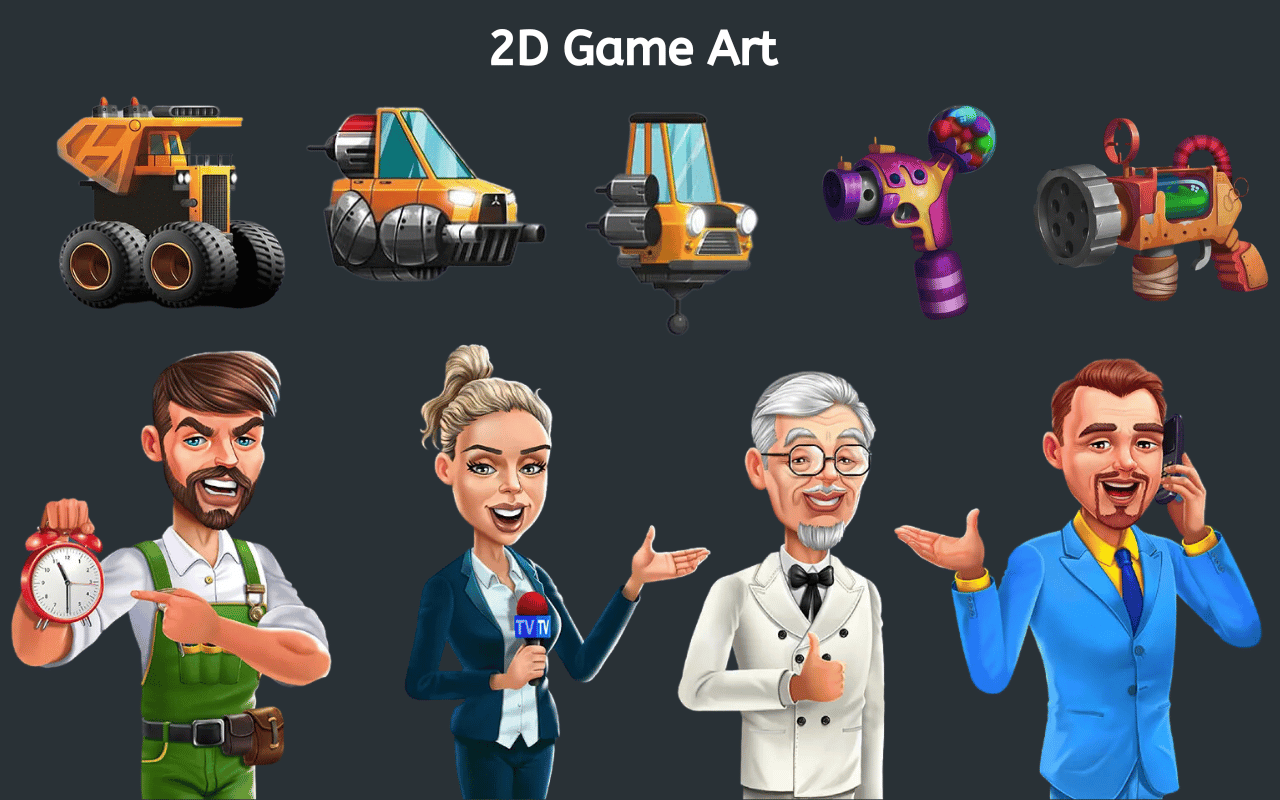
3D Game Art Outsourcing Prices
3D art outsourcing costs are generally more demanding.
- Simple Assets: Basic props or modular elements typically cost from $100$ to $400 each.
- Mid-Complexity: Character models without complex rigging may range from $800 to $2,500.
- Complex/Animated Assets: Fully rigged, textured, and animated models can cost between $3,000 and over $10,000.
Rates increase based on factors like polygon count, the realism of texturing, and specialized requirements for integration into engines like Unreal Engine or Unity. Studios known for cinematic or realistic art often charge premium game art pricing.
3D Art Service | Price List (USD) | Price List (EUR) |
|---|---|---|
3D Character (Including concept art, modeling, and texturing) | $1000 – $5000 | €950 – €4,800 |
3D Environment (Including concept art, modeling, and texturing) | $1500 – $10,000 | €1,450 – €9,500 |
3D Prop (Including concept art, modeling, and texturing) | $500 – $2000 | €480 – €1,900 |
3D Character/Prop Rig | $500 – $2000 | €480 – €1,900 |
3D Character/Prop Animation (Per Cycle) | $200 – $500 | €190 – €480 |

What Factors Influence Game Art Outsourcing Costs?
Several key variables drive the final art outsourcing costs:
Art Style and Visual Identity
The chosen art style (like stylized vs. realistic) poses distinct challenges. Realism, which demands meticulous materials and rendering, is generally more expensive than a simpler, cleaner look. Clear art direction is essential to prevent the costly rework of game art styles.
Level of Detail and Technical Complexity
High-fidelity elements, such as dense polycounts, intricate shaders, or layered 2D compositions, require more production time and computing power. Increased intricacy directly raises the final cost.
Number of Assets and Scope
While large orders may qualify for discounted bulk game art pricing, they necessitate strict supervision to ensure consistent quality across hundreds of items. A robust project management plan is mandatory.
Studio Location and Hourly Rates
Location-based rates cause massive price variations. Studios in North America or Western Europe often charge two to three times more than those in Asia or Eastern Europe, even when the talent quality is comparable.
Artist Experience and Skill Level
Senior artists charge higher rates because they deliver greater speed, creativity, and problem-solving, which ultimately reduces the total project duration. Junior talent is cheaper but requires more guidance and review.
Timelines and Revisions
Tight deadlines or multiple, unplanned revision cycles will quickly inflate costs. Scheduling a time buffer helps prevent emergency rush fees.
Get a Quote
Interested in knowing how much your game art project will take? Contact us today for a detailed quote and let’s create something amazing together.
How Do Outsourcing Costs Compare to In-House Art Teams?
While hiring an in-house team offers maximum control and seamless collaboration, it comes with a significantly higher fixed cost. The combined expenses for salaries, benefits, hardware, and software licenses typically make in-house teams 40–60% more expensive than leveraging an external outsourcing partner.
Outsourcing converts these fixed overheads into flexible project expenses, allowing studios to scale their art production up or down based solely on current workload. For smaller game development companies, outsourcing is often the only way to achieve high-quality visuals without the financial burden of a full-time payroll.
Some considerations when comparing:
- Salaries: In-house artist salaries vary by experience and location. Outsourcing can provide flexibility.
- Team size: Outsourcing studios may provide larger teams to scale.
- Scalability: Outsourcing allows studios to ramp teams up and down as needed.
- Software, Hardware: Outsourcing studios absorb the costs of tools and equipment.
- Overhead: No office space or benefits to manage.
- Training: Outsourcing studios maintain skills; avoid costs to train in-house.
- Specialization: Access to skills not available locally.
- Timelines: Outsourcing studios can speed up art creation.
How Does Location Impact Pricing?
Geographic location is a critical factor determining game art pricing:
- North America & Western Europe: Highest rates ($50–$150 per hour). Premium quality and experience.
- Eastern Europe: Competitive pricing ($25–$70 per hour). Known for strong technical skills and reliability.
- Southeast Asia: Lowest rates ($15–$50 per hour). Large, growing pool of creative talent, though quality assurance may be variable.
- Latin America: Mid-range rates. Offers advantageous timezone compatibility for U.S. clients.
Understanding these location-based rates helps studios effectively balance cost expectations with the need for communication efficiency and output quality.
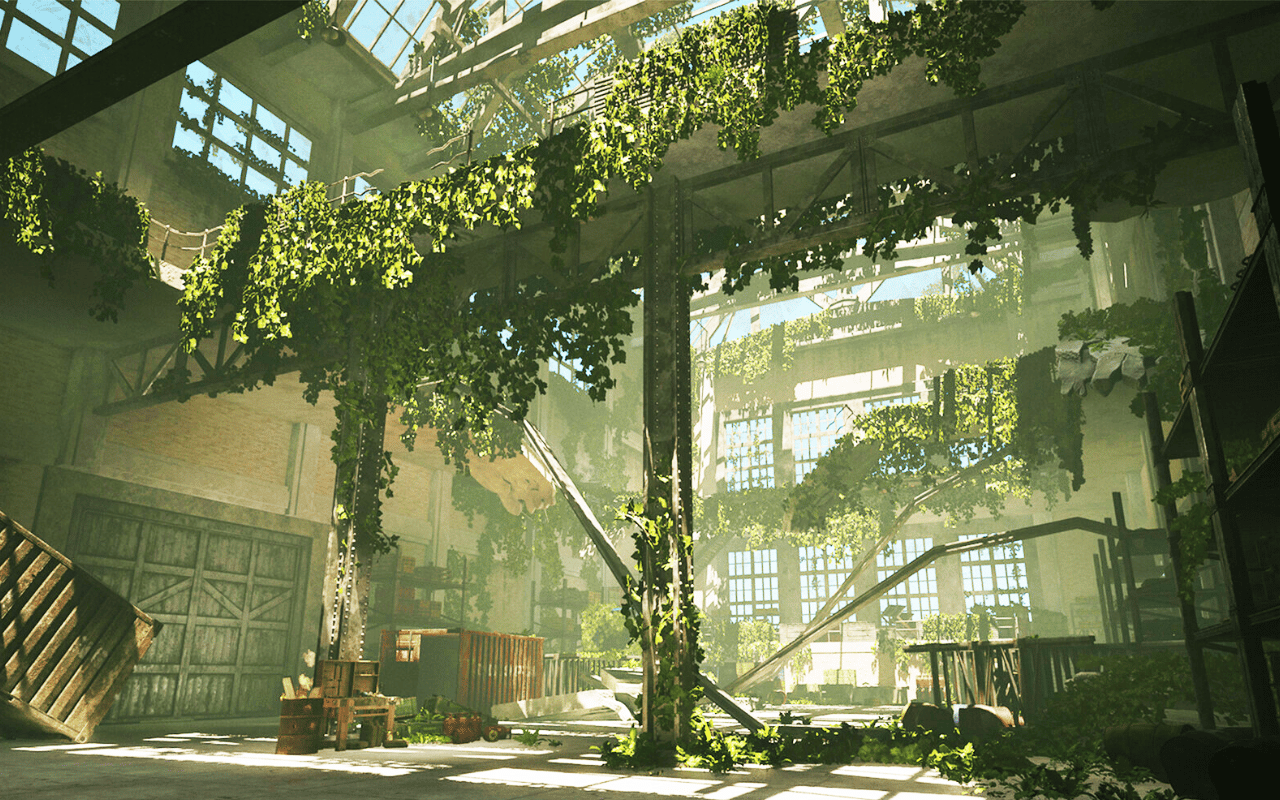
Key Considerations for A Smooth Outsourcing Process
A streamlined process depends on deliberate planning and strong partnership:
Communication and Collaboration Tools
Using tools like Slack, Trello, or ShotGrid ensures transparency through regular updates. Clear documentation in the game art pipeline prevents misunderstandings and builds trust across global teams.
Time Zone Coordination
Scheduling overlapping work hours, even just two hours for live discussions, significantly speeds up the feedback and review process.
Quality Assurance and Consistency Checks
Conducting internal quality assurance ensures every delivered asset meets both visual and technical specifications. Detailed style guides and reference sheets are indispensable for maintaining consistency on large projects.
Tips to Maximize Value and Minimize Costs in Game Art Outsourcing
Achieving cost efficiency requires a smart, targeted approach:
Prioritize Core Visual Elements
Allocate the majority of your budget to high-impact visuals, like main character design or key environments, while allowing for simpler design for background or secondary assets.
Build a Vertical Slice
Creating a polished, contained sample of gameplay (vertical slice) validates your art direction and workflow before committing to full-scale production. This is an industry-proven method to reduce risk.
Smart Use of AI Tools
Leveraging AI tools for tasks like concept art generation or texture upscaling (using programs like Midjourney or Substance AI) can cut down on basic production time without replacing the core artistic expertise.
These AI art tools can quickly generate concepts and model sculpts for pennies compared to concept art studios‘ 3D artists.
Reuse and Modify Online Assets Wisely
Game-ready assets from marketplaces (like Unity Asset Store) can rapidly fill production gaps. Modifying these assets to match your project’s art style keeps costs low while preserving originality.
Careful Pre-Production Planning
A thorough brief, detailed timeline, and formal feedback plan are more valuable than any hourly discount. Clarity minimizes miscommunication and ensures consistent results for all deliverables.
Final Words
Game art outsourcing offers outstanding value when approached with a clear strategy. By understanding the real art outsourcing costs, appreciating regional price differences, and adhering to workflow best practices, studios of any size can create visually impressive games without straining their budget.
Whether you partner with a specialized game art studio or manage a team of freelancers, success is built on clear communication tools, smart prioritization, and rigid quality assurance.
Ready to explore your outsourcing options? Start small, plan meticulously, and scale with confidence.
